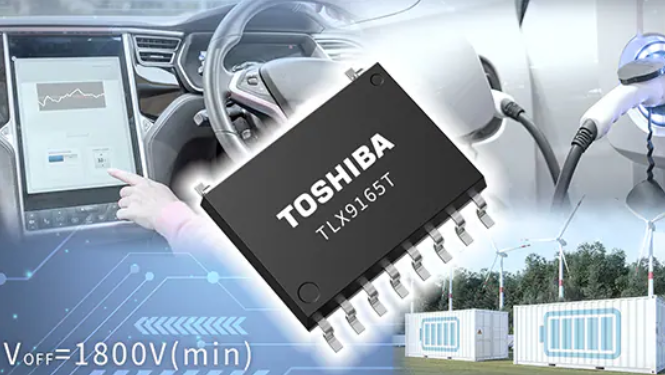On July 17, Toshiba Electronic Devices & Storage Corporation announced the launch of a new automotive photorelay, the TLX9165T, which comes in a 10-pin SO16L-T package and supports an output voltage withstand of 1800V (minimum) for high-voltage automotive batteries. The product is now in mass production. Shortening charging times and extending driving ranges are crucial for the widespread adoption of electric vehicles, both of which require more efficient operation of battery systems. The Battery Management System (BMS) achieves efficient operation by monitoring the battery’s charge status and ensuring insulation between the battery and the vehicle body, which is vital for the safe use of high-voltage batteries. BMSs that handle high voltage must use optically isolated photorelays. Energy Storage Systems (ESS) designed for efficient operation of renewable energy also employ similar configurations to BMSs; they deal with high voltages similar to those in electric vehicles and utilize electrically isolated photorelays. While 400V battery systems are mainstream in electric vehicles, the growing demand for longer ranges and faster charging speeds is accelerating the transition to 800V systems. Photorelays used in these battery systems must have a voltage withstand of approximately twice the system voltage, requiring at least 1600V for 800V systems. Toshiba's new photorelay employs newly developed high-voltage MOSFET technology, achieving an output voltage withstand of 1800V (minimum), making it suitable for 800V systems. The pin spacing and pin configuration are the same as SO16L-T, allowing for universal PCB layout design. Toshiba will continue to develop photorelay products suitable for automotive battery systems and industrial equipment energy storage systems, contributing to the safe operation of these devices. Applications include automotive devices: BMS (battery voltage monitoring, mechanical relay stickiness detection, ground fault detection, etc.) and industrial devices: Energy Storage Systems (ESS) as a replacement for mechanical relays. Features include output voltage withstand: VOFF=1800V (minimum), normally open (1-Form-A) device, avalanche current rating: IAV=0.6mA, high isolation voltage: 5000Vrms (minimum), compliant with AEC-Q101 standards, and conforms to IEC 60664-1 international standards.
Toshiba Launches New Automotive Photorelay for High Voltage Battery Systems

Share this post on: